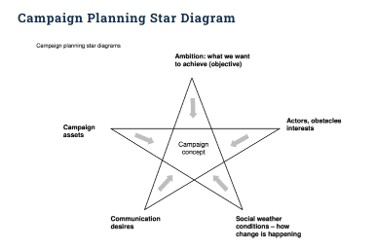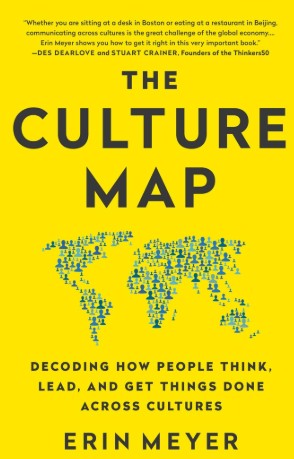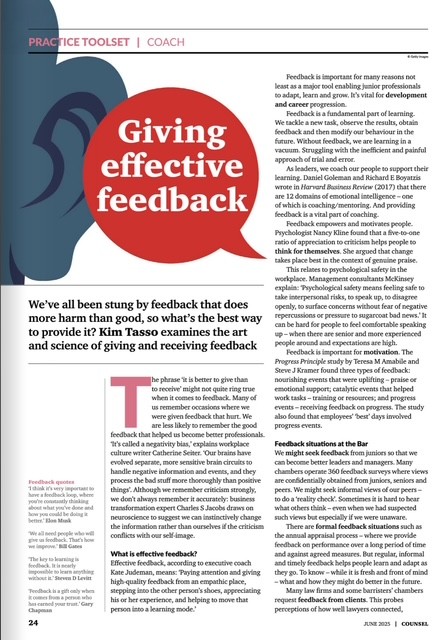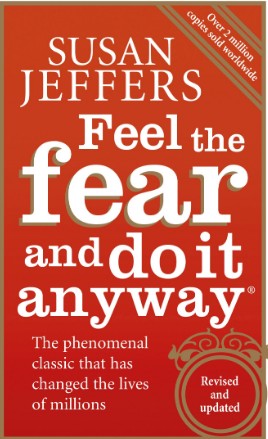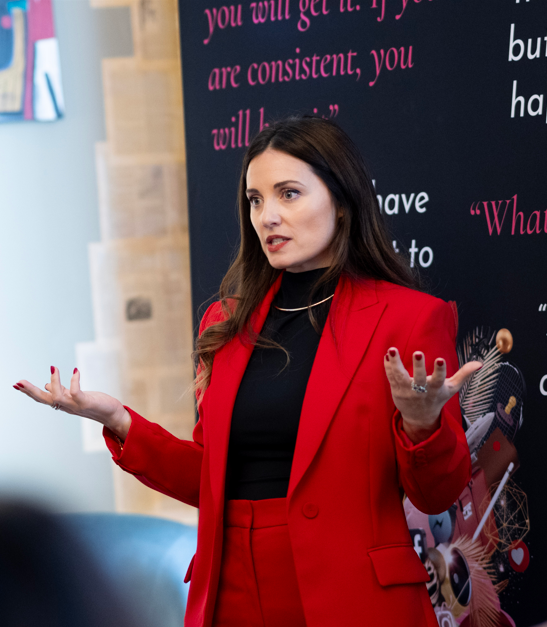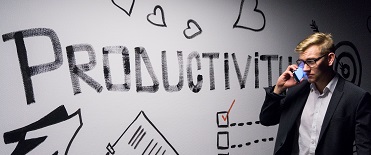
In October, I was invited by Richard Chaplin and Richard Thorby of the Managing Partners Forum https://www.mpfglobal.com/ to lead a discussion on “Changing behaviour in the workplace to boost productivity – Insights from psychology” for the People, Performance and Culture group (including directors and HR professionals from leading law, architectural, property and accounting firms). This is a summary of the points covered and the ensuing discussion.
Introduction to behaviour change
In 1789 Benjamin Franklin said: “in this world nothing can be said to be certain, except death and taxes”. Buddha said “Remember that the only certainty in life is change”. Anyone who has worked with lawyers, accountants and surveyors knows that achieving change is one of the biggest challenges we face.
Professionals drive productivity and profits. But sadly they aren’t machines that can be reprogrammed or re-engineered easily. They are human beings driven by emotion, habit and unconscious processes.
Behavioural economics – fast and slow thinking, decision-making and nudging – is all the rage. But we should take a broader look at some of the other (old and new) themes in psychology and neuroscience to find new ways to change behaviours in the workplace to boost productivity of our fee-earners.
What follows is a whirlwind tour of some leading thoughts on small things that can promote big changes from behaviourists (e.g. motivation and anxiety), neuroscientists (e.g. fixed action and trigger patterns), cognitive scientists (e.g. biases), organisational psychologists (e.g. sorting effect), social scientists (e.g. Intentional Change Theory) and business professors (e.g. change management).
What productivity improvements can be achieved with behaviour change
There have been some astonishing results for productivity improvement. For example:
- Dr James Barr found up to 44% increases in productivity through a blend of fixed salary and performance pay
- He also found that allowing people to choose to work from home (the sorting effect) increased productivity by 22%
- In November 2019 Business Insider magazine reported that a Microsoft experiment with a four day week achieved a productivity improvement of 40%
- (“Happy workers are 13% more productive” from a report from University of Oxford, BT, MIT and Erasmus University – 4.12.19)
Furthermore:
- Stress and anxiety have now become the number one reason for absence in the UK affecting 58% of the working population at a cost of £42 billion per year
- Cognitive psychologist Jerome Bruner suggests we are 22 times more likely to remember a fact when it has been wrapped in a story
- Earlier this year Dr Duncan Brumby, a Human Computer Interface (HCI) expert at UCL, presented a paper on “Digital distraction – the impact of digital devices on life at work, home and the car”. He reported “People work for about three minutes on a task before switching” (Gonzalez and Mark, 2004).
- Face-to-face requests are 34 times more likely to be accepted than by email (HBR 2017 https://hbr.org/2017/04/a-face-to-face-request-is-34-times-more-successful-than-an-email)
Some insights from psychology
From over 30 years of studying psychology – from degrees, to psychometric assessments, to NLP and coaching qualifications and ultimately to counselling training – I have gleaned the following insights that relate to what psychology can tell us about productivity improvement.
Strategy and plans are relatively easy – it’s the execution and implementation that are the challenge – because it requires individual action and behaviour change. It’s not for fun that they call management in the professions “herding cats”.
When it comes to leadership there is the eternal balancing act between achieving the task and managing the relationships. If we push ideas – they will resist. So we need to learn how to pull, persuade and nudge more effectively.
Often leaders and HR professionals are looking through the organisational lens – from the top down – at strategies, systems, policies and procedures. Organisational psychologists can contribute here.
But we also need to consider change from the bottom up – from the individual’s perspective. This is the focus of psychologists working with individuals – clinical psychologists, counsellors, therapists, coaches and neuroscientists.
Many years (decades!) ago, when I first studied psychology I spent time in a lab with a rat. I had to teach the rat to press the lever to get food when only the green (not the red) light flashed. That process took just 45 minutes. Rewarding the right actions and shaping behaviour works. Luckily, the ethics even then prevented us from using punishments – like electric shocks – to deter those rats from “bad” behaviours. But it does work. The carrot and stick approach.
But the Behaviourist model – rats responding to positive rewards and negative punishments – is not the whole answer. Although we tend to cling to this model with incentives and performance management. Because it doesn’t work so well if the rat isn’t hungry. Or if the environment is so rich and there are lots of other things for the rat to investigate or do. Or if the rat is more interested in something else – like a rat of the opposite sex!
Psychologists know that personal transition lags organisational change – individuals vary hugely in the speed with which they make transitions.
One of the earliest psychologists and one of my personal favourites said: “Transition is about letting go of the past and taking up new behaviours or ways of thinking. Planned change is about physically moving office or installing new equipment or restructuring. Transition lags behind planned change because it is more complex and harder to achieve. Change is situational and can be planned, whereas transition is psychological and less easy to manage” (William Bridges).
The type of change involves different systems and time horizons:
- Cultural change involves beliefs and values in the long term
- New projects and initiatives involves cognitive processes in the medium term
- Action involves emotion in the short term
In every change or transition we have to let go of the old behaviour. So we need to understand the change process – each stage evoking either negative or positive energy:
- Immobilisation (we “Freeze” – psychologist Lewin explained we need to start by providing psychological safety so that we unfreeze)
- Denial
- Frustration
- Acceptance
- Development
- Application
- Completion and competence
Each of us has a deep fear of change. We only change when we meet the right balance of:
Learning anxiety – Anxiety of learning something new
Survival anxiety – The pressure to change
And fears include:
- Fear of temporary incompetence
- Fear of punishment for incompetence
- Fear of loss of personal identity
- Fear of loss of group membership
So personal and social identity theories are relevant here.
We are often working on auto-pilot with 70-90% of behaviour being habit and an average attention span of eight seconds (goldfish beat us at nine seconds!). Evidence shows that there is an adaptive third http://kimtasso.com/change-management-creativity-third-adapt-easily/ The simple difference in behaviour of the adaptive third was that whilst everyone else looked back at what had happened and why, they focused on the future. Maddi described it as “existential courage”. The adaptive third asked “What can good people do when bad things happen?” instead of “Why do bad things happen to good people?”
A comfort zone is a behavioural state where a person is anxiety neutral using a limited set of behaviours to deliver a steady level of performance usually without a sense of risk (White, 2009). It is a type of mental conditioning that causes a person to create and operate mental boundaries which create an unfounded sense of security. Stepping out of the comfort zone raises anxiety levels and creates a stress response, the result of which is an enhanced level of concentration and focus (Optimal Performance Zone, White) Avoid the danger zone!
In an article in HBR in May 2017 by Kristy Hull of PWC https://www.strategy-business.com/blog/Getting-to-the-Critical-Few-Behaviors-That-Can-Drive-Cultural-Change?gko=29671 she says that focusing on a few critical behaviours (called keystone behaviours) is one of the tenets of working effectively with organisational culture. They are critical because they will have a significant impact on business performance when exhibited by large numbers of people. Use the “five whys” approach to uncover the root of the problem then:
- Know what you are trying to accomplish
- Define the behaviours (specific, repeatable and applicable to everyone) that will contribute to the goals
- Prioritise the few, critical behaviours (those that are easiest to implement with the highest impact). Implementation criteria include:
- Actionability
- Visibility
- Measurability
- Speed of results
- Ease of implementation
- Validate your choices with input from formal and informal leaders
- Drive, reinforce and measure those behaviours
Behavioural economics burst into our lives in May 2012 with “Thinking fast and slow” by Daniel Kahneman. This Israeli-American psychologist and economist was notable for his work on the psychology of judgment and decision-making. He described System 1 Fast thinking – and System 2 slow thinking. Kahneman established a cognitive basis for common human errors that arise from heuristics and biases (Kahneman & Tversky, 1973). These are the basis of nudges which are considered below.
At a British Psychological Society conference in July this year http://kimtasso.com/conference-report-british-psychological-societys-bps-psychology-means-business/ I was fortunate to see Dr James Barr (an Organisational Business Psychologist) show how productivity underpins national wealth and the UK’s trailing position behind the G7. He presented an evidence-based journey to show the nine areas where psychology can increase productivity:
- Selection
- Motivation
- Leadership
- Culture
- Innovation
- Work design
- Team
- Training
- Mental health
I would like to draw attention to five books in the area of behaviour change that I have found particularly useful:
1. Chip and Dan Heath’s book “Switch – How to change when change is hard” (2010)
These American business professors have an interest in social entrepreneurship. They worked with John Kotter (author of “Heart of Change”) and Dan Cohen who worked with Deloitte Consulting to learn that the change process isn’t “analyse – think – change” but “see – feel – change”.
They developed a simple three step model of change: 1. Rational (Rider) reason 2. Emotional (Elephant) motivation and 3. first, specific step in the new direction
Thy also provided some helpful tips to promote change:
- Shrink the change – offer small steps towards a bigger goal
- Find the bright spots – use appreciative enquiry to look at what’s working well – harness good role models
- Self-control is exhaustible – the reason people sometimes stop trying is not laziness but exhaustion
- Script the critical moves – provide crystal clear instructions as “clarity dissolves resistance”
- People problems are often situation problems – analyse the environment to avoid attribution theory
- Develop action triggers – a link to nudging
- Rally the herd – if there are resisters around, create space where the reformers can get together without them
- Build habits – use Mere’s exposure effect (familiarity alone makes something more likely to build change)
Managing a project – The IDEO “project mood chart” – shows people will feel positive at the start (hope) and the end (confidence) of the project, so you should expect things to look like a failure in the middle. There is a need to reframe failing as learning.
2. Lessons from Cialdini’s “Influence: The Psychology of Persuasion” (2001)
http://kimtasso.com/book-review-small-big-small-changes-spark-big-influence-steve-j-martin-noah-j-goldstein-robert-b-cialdini-persuasion-science/ Cialdini’s original book in 1984 on persuasion and marketing, “Influence: The Psychology of Persuasion” and later book on small changes sparking big influence is relevant.
His work considered fixed action patterns (which relate to later ideas on nudges):
- Humans can have automatic responses from a single trigger feature
- The compliance process is efficient and economic
- You are more successful if you provide a reason when requesting a favour (the power of using the word “because”)
- We believe that you get what you pay for (expensive=good)
- You can set up examples (e.g. present a few poor options before an acceptable/good one – this is popular with estate agents – and the Brexit debate!)
Cialdini identified six persuasion drivers:
- Scarcity – The rule of the few
- Opportunities seem more valuable to us when they are less available
- Reciprocation – Give and take
- We are obligated/try to repay what another person has given us
- Big request – rejection – small request
- Commitment and consistency – Hobgoblins of the mind
- Once we make a choice/stand, we will encounter personal and interpersonal pressures to behave consistently with that commitment
- Small commitment – big commitment
- Social proof – Truths are us
- We view a behaviour as correct in a given situation to the degree we see others performing it (especially in uncertainty)
- Liking – The friendly thief
- We prefer to say yes to the requests of people we know and like
- Authority – Directed deference
- We have a deep seated sense of sense of duty to authority
3. Lessons from “The change catalyst – secrets to successful and sustainable business change” by Campbell MacPherson (2017)
In his 2017 award-winning book Cameron MacPherson reported:
- 88% change initiatives fail – 2016 Bain & Company survey of 250 large companies
- Two thirds of change projects fail – 2008 McKinsey survey estimated
- 70% of change management project fail – 1996 John Kotter
The 10 reasons change initiatives fail he argued are:
- People don’t like change
- Lack of clarity regarding what we are trying to achieve and why
- The implications are not fully understood
- An obsession with process over outcomes
- Inertia
- The project is set up to fail
- Poor communications and disingenuous stakeholder engagement
- We forget that emotions trump logic every time
- A change-averse culture
- The leadership doesn’t stay the course
He said that to promote successful change we need to do 10 things:
- Have a change catalyst to drive delivery
- Be clear about what we are trying to achieve and why
- Have a detailed understanding of the implications of the change
- Possess a laser-like focus on the outcomes
- Create a change process that includes “pause for reflection”
- Provide clear governance and thorough planning
- Achieve genuine engagement with people at all levels of the organisation
- Identify emotional triggers
- Forge a strong committed, aligned and unwavering leadership team
- Create a change-ready culture
4a. Lessons about cognitive bias (just before we get to Nudge)
The Cognitive Bias Codex designed by John Manoogian III showed that there are over 180 biases, grouped into:
- What we should remember
- Too much information
- Not enough meaning
- Need to act fast
In my book on Better Business Relationships http://kimtasso.com/publications/better-business-relationships/ I wrote about a number of these biases including:
- Anchoring bias – over-reliance on the first piece of information received. If we are told to expect to pay £100 for something, we will compare all other prices to this £100 ‘standard’
- Bandwagon effect – tendency to do what everyone else is doing (a form of Groupthink)
- Bias blind spot – seeing biases in others but not yourself
- Clustering illusion – we see patterns in random events
- Confirmation bias – tendency to seek information that supports our existing beliefs. We form mental models of the world and search for information to support our existing view. Leon Festinger explained cognitive dissonance as the human need for consistency: ‘Mental stress or discomfort is experienced by an individual who holds two or more contradictory beliefs, ideas or values at the same time or is confronted by new information that conflicts with existing beliefs, ideas or values’ In these situations we either deny the new information or change our opinion
- Decoy effect – different decisions depending on whether there are two or three options (I have written about this in the context of pricing policies)
- Fundamental attribution error – attributing situational behaviour to fixed personality
- Halo effect – a first positive impression sticks. There is a tendency for a positive impression created in one area to influence opinion in another. If you see an organization favourably for one of its products, you are likely consider its other products in a similarly positive way.
- Loss and reward – we tend to prefer a small reward now compared to a bigger reward in the future
- Overconfidence – we are too confident in own abilities. 80% think they are above average!
- Planning fallacy – tendency to think that we can do things more quickly than we actually can
- Primacy effect – first information is most valued
- Recency – most recent information is valued most
- Repetition – We are likely to be persuaded when a piece of information is repeated on numerous occasions
- Status Quo – we favour options that perpetuate the existing approach
- Sunk cost – we avoid losses and prefer decisions that justify past actions – even when they are flawed
4b. “Nudge – Improving decisions about health, wealth and happiness” – Richard H Thaler and Cass R Sunstein (2008)
http://kimtasso.com/book-review-nudge-improving-decisions-about-health-wealth-and-happiness-by-richard-h-thaler-and-cass-r-sunstein/ The authors won the Nobel prize for the impact of behavioural economics on decision-making.
The core insight is that we unconsciously make better decisions if the designed environment (created by choice architects) nudges you in the right direction every time temptation becomes greatest.
“First, never underestimate the power of inertia. Second, that power can be harnessed”
- A nudge is a subtle cue or context change that pushes you to make a certain decision without forcing you to
- One of the most powerful nudges is the default
- When states use nudges well, they can improve entire countries”.
The way we frame a decision affects our choice. A simple example: Put healthy food options at the front and at eye level for a 25% increase in use. Nudges are tiny hints or changes, which push you in one direction, but leave all options open.
Like Cialdini they highlight the tendency to conform – 20% – 40% of people conform even when the answer is wrong! They also argue that “The best way to help humans improve their performance is to provide feedback” (see http://kimtasso.com/art-giving-feedback/
We know that attitudes are important from the work on growth and fixed mindsets by Dweck. We can segment the internal audience this way and tailor communications to align with their underlying beliefs. People who have a fixed mind set believe that their abilities are basically static and will feel threatened by negative feedback. Growth mind set people compliment people on their effort rather than their natural skill.
5. Lessons from “Helping People Change – Coaching with compassion” by Boyatzis, Smith and van Oosten (2019)
From the arena of positive psychology these authors are organisational psychologists from the Humanist approach. Their book describes Intentional Change Theory (ICT).
They stress the paramount importance of ideal self – and future vision. Whatever change you want must fit with this vision and the desire to change must outweigh the obligation to change.
The authors show that the Power of Positive Energy Attractor (PEA) is more important than compliance with external goals or thoughts of “ought” or “should” (which generates negative NEA). “To make change stick, our research shows that it has to be intentionally and internally motivated rather than imposed from the outside”.
They also emphasise the need for resonant relationships – mindfulness, positive emotional tone, arousal of hope, authentic connection and compassion.
Their coaching process in ICT is:
- Identify the ideal self and personal vision
- Explore the real self – both strengths and weaknesses
- Establish a learning agenda
- Experiment and practice new behaviour
- Maintain resonant relationships and social identify groups
The authors also refer to the science of two brain networks – the analytic network (AN) for tasks and the empathic network (EN) for focus on others. This returns to the task vs. relationships model familiar in the leadership models that were mentioned earlier.
The authors mention the interaction of a third component – the renewal system where the PNS battles the SNS. This is an elaboration of the old left brain-right brain balance – the AN analyses and solves problems and the EN is open to new ideas. The authors relate this to different learning styles http://kimtasso.com/improve-learning-effectiveness-using-kolbs-learning-styles/
There’s significant evidence for the emotional and hormonal impact on successful learning, There is powerful support for the effectiveness of ICT – an increase of 61% in Emotional and Social Intelligence (ESI).
In his 1960 book “Psycho-Cybernetics”, Maxwell Maltz suggested that it takes at least 21 days to form a new habit. Later researchers at the University College London (UCL) found that there was considerable variation ranging from 18 to 254 days.
John Gottman studied loving, stable couples and found a 5:1 ratio of PEA to NEA is needed if a marriage is to thrive. This ratio was also supported by Nancy Kline in her book “Time to Think” in the organisational context.


